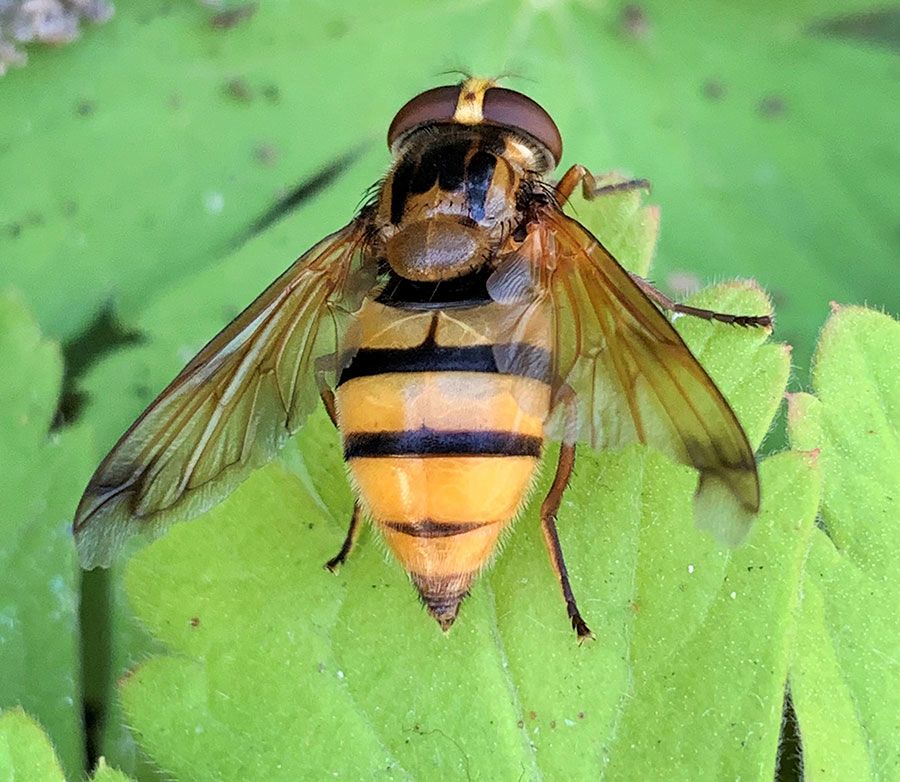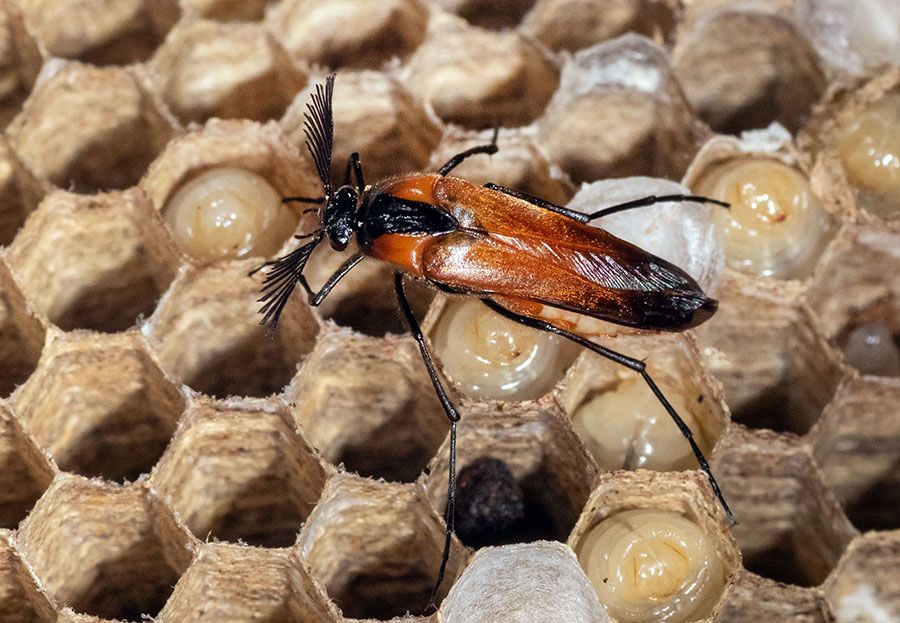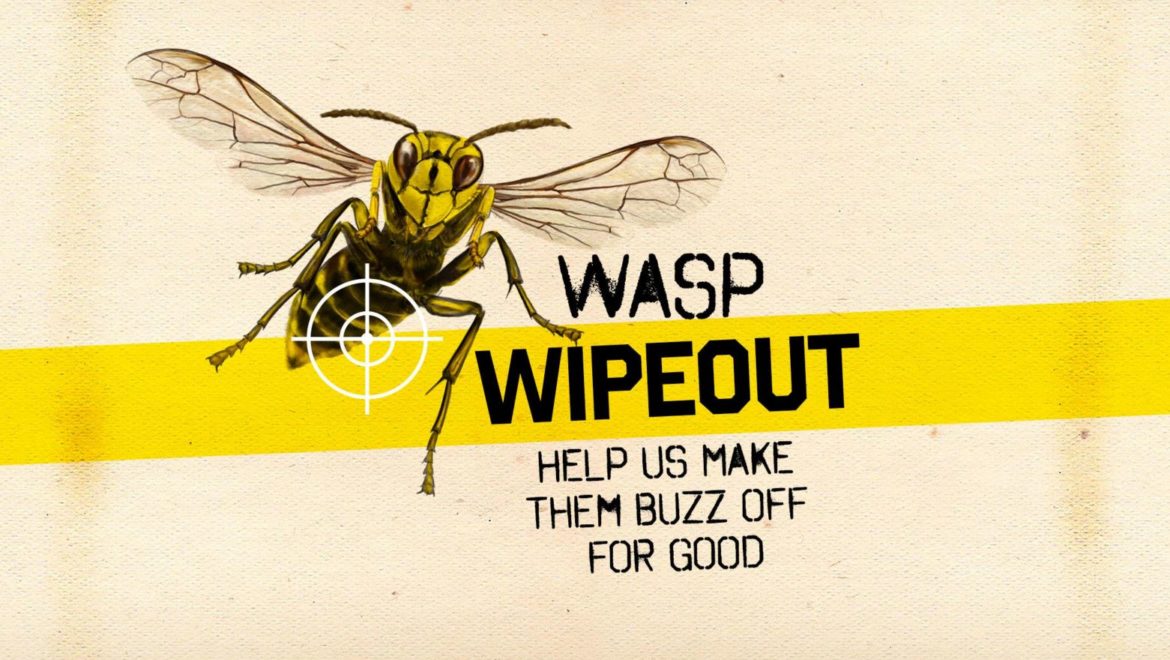This is an excerpt from a Wasp Wipeout at Stuff.
At his office in Lincoln near Christchurch, Dr Bob Brown, an ecologist at Manaaki Whenua Landcare Research, has an incubator containing precious cargo. It holds a potent weapon that may be the best defence against wasps New Zealand has ever had at its disposal. It’s called Volucella inanis, and it’s a large hoverfly with the characteristic black and yellow stripes of a wasp. Humble as the hoverflies might appear, they are the greatest hope in decades for fighting back wasps in meaningful numbers.

The hoverfly’s method for destroying wasps is an ode to evolution. It looks and smells so much like a wasp that it can fly into a nest undetected, laying its eggs inside amidst the oblivious drones. Each fly larva consumes at least two wasp larvae, which has a devastating effect on wasp numbers.
Volucella inanis isn’t the only agent with promise. The other is Metoecus paradoxus, the wasp nest beetle. Each beetle is about 1cm long, with spindly antennae that look like freshly spruced eyelashes. They live for about a week – a lifespan so short a beetle likely does not eat at any point in its life.

In autumn, adult beetles lay eggs in decaying wood and bark around a wasp nest. By spring, wasps will be scrounging for material to expand their nests – and unwittingly pick up a beetle larva, which happens to be expressing a pheromone similar to that of a wasp queen.
Attached to the wasp, the beetle glides into the nest undetected; Undercover and behind enemy lines, it attacks and consumes wasp larvae. In enough numbers, they can collapse an entire nest.
Both are parasitoids, which co-evolved with wasps – they exist only to consume them, and they do so successfully. In a recent survey of wasp nests in the UK, V.inanis were found in every one, Brown says.
For years, his work has been dedicated to looking for an agent like these – ones that, if released, might fight back the wasp hordes. It has involved frequent trips to the UK, deconstructing nests to see what they contain, often racing badgers – perhaps the most efficient wasp killer of all – to get there first.
It has involved researching bizarre and gruesome parasitoids, like the wasp-grabber fly, which rips into a live wasp’s abdomen, lays eggs inside, and brainwashes the wasp to bury itself underground; it required figuring out how to breed obscure insects and keep them alive on the other side of the world.
Leader of Biota a portfolio of research at Manaaki Whenua at covering the taxonomy and biology of land plants, fungi, bacteria, and invertebrates in Aotearoa. His research interest area is the larger fleshy fungi both native and introduced.

